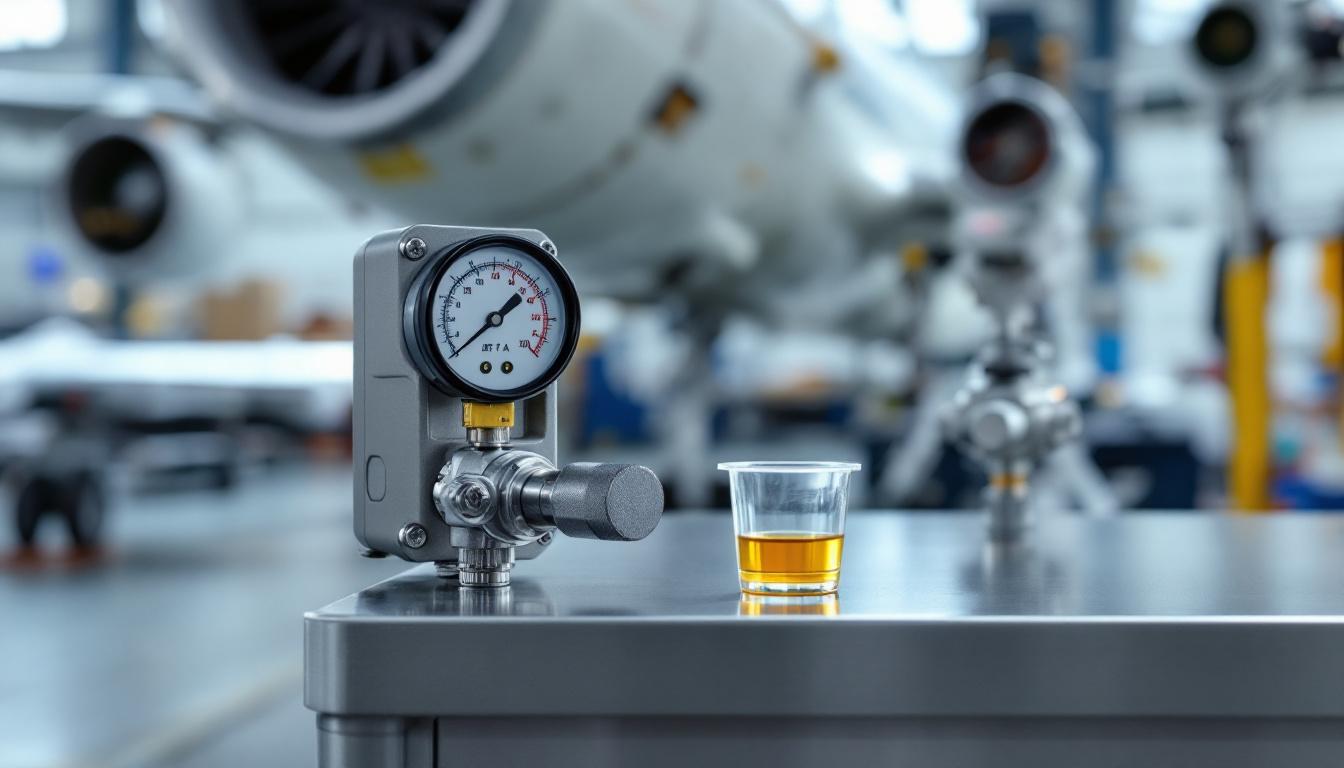
Jet A1 Specs: What You Need to Know
Jet A1 fuel is the lifeblood of modern aviation, powering commercial and military aircraft worldwide. At GLOBAL TERMINAL NETHERLANDS B.V, we understand the critical importance of this specialized fuel and its precise specifications.
In this post, we’ll explore the key Jet A1 specs, from its basic characteristics to handling requirements. Whether you’re a pilot, aviation enthusiast, or industry professional, this guide will provide valuable insights into the fuel that keeps our skies busy.
What is Jet A1 Fuel?
Composition and Properties
Jet A1 fuel powers modern aviation, serving as the primary fuel for commercial and military aircraft worldwide. This kerosene-based fuel is specifically designed for turbine engines, offering a unique combination of performance, safety, and reliability.
Jet A-1 fuel has a density of between 775.0 and 840.0 kg/m3, which directly affects fuel weight calculations for flights. Its flash point of 38°C (100°F) enhances safety during handling compared to other fuel types. A standout feature of Jet A1 is its low freezing point of -47°C (-52.6°F), which allows aircraft to operate in extremely cold conditions without the risk of fuel gelling.
Jet A1 vs Other Aviation Fuels
Jet A1 differs from its close cousin, Jet A, which is primarily used in the United States. The key distinction lies in the freezing point: Jet A freezes at -40°C, while Jet A1’s lower freezing point (-47°C) makes it more suitable for long-haul international flights where aircraft encounter varying and extreme temperatures.
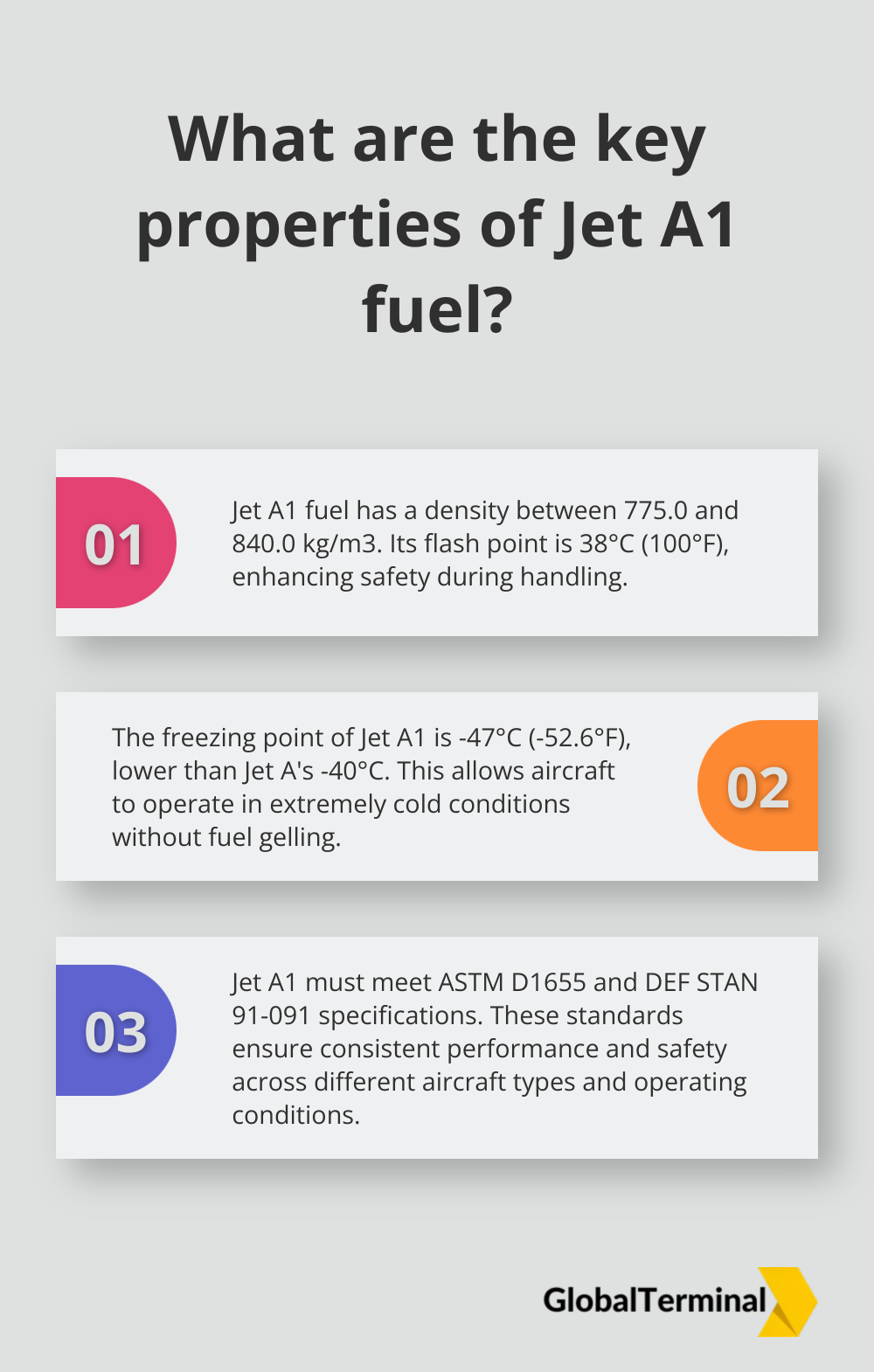
Jet A1 also contrasts with aviation gasoline (avgas) used in piston-engine aircraft. Avgas has a lower flash point and different combustion characteristics, making it unsuitable for jet engines. The global passenger load factor reached 82.3% during the first nine months of 2023, which is broadly in line with the load factor achieved during the same period in 2019, underscoring the growing demand for Jet A1 fuel.
Applications in Aviation
Commercial aviation consumes the majority of Jet A1 fuel. Recent market analysis projects that the commercial aviation sector will remain the largest application segment for Jet A1 through 2032. This demand stems from the rise of low-cost carriers and increasing air travel in developing economies, particularly in the Asia Pacific region.
Military aviation represents another significant user of Jet A1. The fuel’s high energy content and thermal stability make it ideal for high-performance military aircraft. The military’s consistent demand for high-quality aviation fuel creates a stable market for Jet A1 producers and suppliers.
Quality Standards and Specifications
Jet A1 fuel must meet stringent international standards to ensure safety and performance in aviation operations. The American Society for Testing and Materials (ASTM) D1655 and the UK Ministry of Defence Standard 91-091 (DEF STAN 91-091) set the specifications for Jet A1.
These standards define requirements for various properties of the fuel, including:
- Density (775-840 kg/m³ at 15°C)
- Flash point (minimum 38°C)
- Freezing point (maximum -47°C)
- Aromatics content (maximum 25% by volume)
- Thermal stability
Adherence to these specifications ensures that Jet A1 fuel performs consistently and safely across different aircraft types and operating conditions.
As we move forward to explore the technical specifications of Jet A1 in more detail, it’s important to understand how these properties influence the fuel’s performance and handling requirements.
Key Specifications of Jet A1 Fuel
Jet A1 fuel specifications play a vital role in ensuring safe and efficient aircraft operations. These exacting standards guarantee top-quality aviation fuel for the industry.
Density and Specific Gravity
Jet A1 fuel must maintain a density between 775 and 840 kg/m³ at 15°C. This range is essential for accurate fuel weight and aircraft performance calculations. Airlines and pilots depend on precise density measurements for fuel load determination and flight planning.
Flash Point and Freezing Point
The flash point of Jet A1 stands at a minimum of 38°C (100°F), which exceeds that of many other fuels. This higher flash point improves safety during handling and storage.
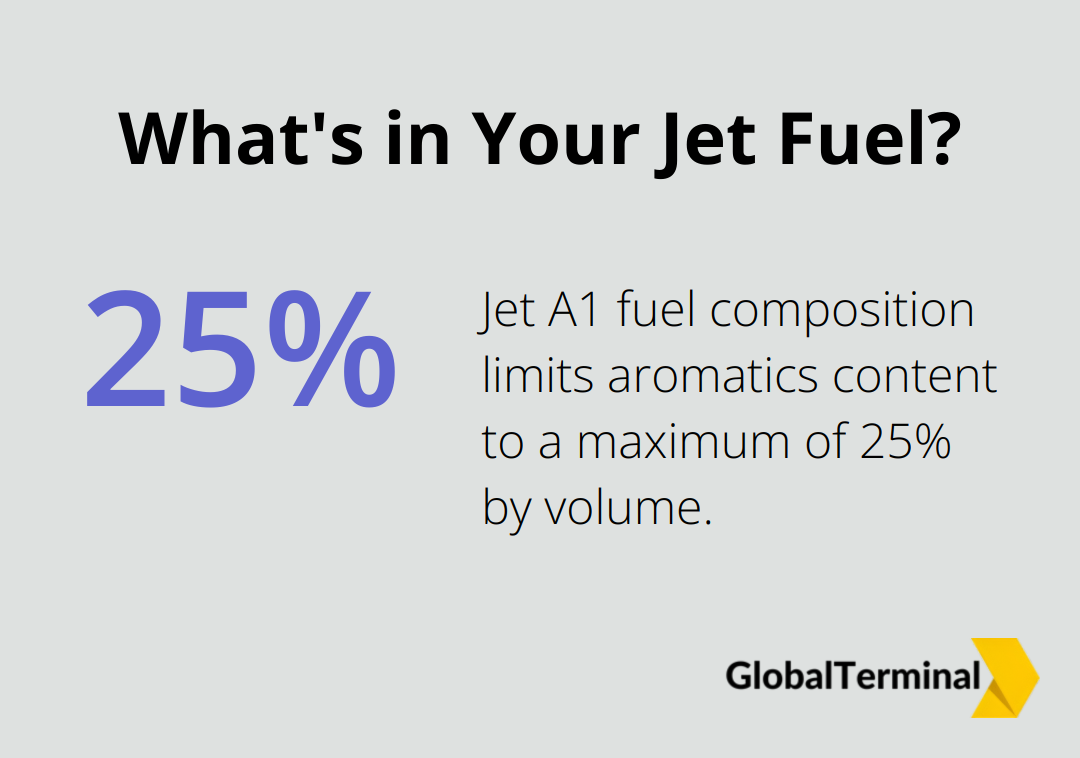
Jet A1’s freezing point reaches -47°C (-52.6°F), lower than its counterpart Jet A (-40°C). This lower freezing point proves essential for long-haul flights, particularly those crossing polar routes.
Aromatics Content and Thermal Stability
Jet A1 fuel composition limits aromatics content to a maximum of 25% by volume. This limit strikes a balance between fuel performance and environmental considerations. Higher aromatics can increase soot formation and emissions.
Thermal stability represents another critical factor. Jet A1 must pass the JFTOT (Jet Fuel Thermal Oxidation Test) at 260°C for a minimum of 2.5 hours. This test ensures the fuel withstands the high temperatures in modern jet engines without breaking down or forming deposits.
Energy Content and Combustion Quality
Jet A1 fuel must deliver a minimum net heat of combustion of 42.8 MJ/kg. This high energy content is crucial for aircraft range and efficiency.
The smoke point, which measures combustion quality, must reach at least 25 mm for Jet A1. A higher smoke point indicates cleaner combustion, reducing visible emissions and improving engine longevity.
These rigorous specifications ensure that Jet A1 fuel meets the demanding requirements of modern aviation. The next section will explore the proper handling and storage procedures necessary to maintain the integrity of this high-performance fuel.
How to Handle and Store Jet A1 Safely
Proper handling and storage of Jet A1 fuel are essential for maintaining its quality and ensuring safety in aviation operations. This chapter explores the key aspects of safe Jet A1 management.
Transportation Safety Measures
Jet A1 transportation requires strict adherence to safety protocols. NFPA 385 provides for safe transportation of flammable and combustible liquids in tank vehicles through design and construction requirements. All vehicles used for transportation must have proper placarding and documentation. Drivers need specialized training in hazardous materials handling.
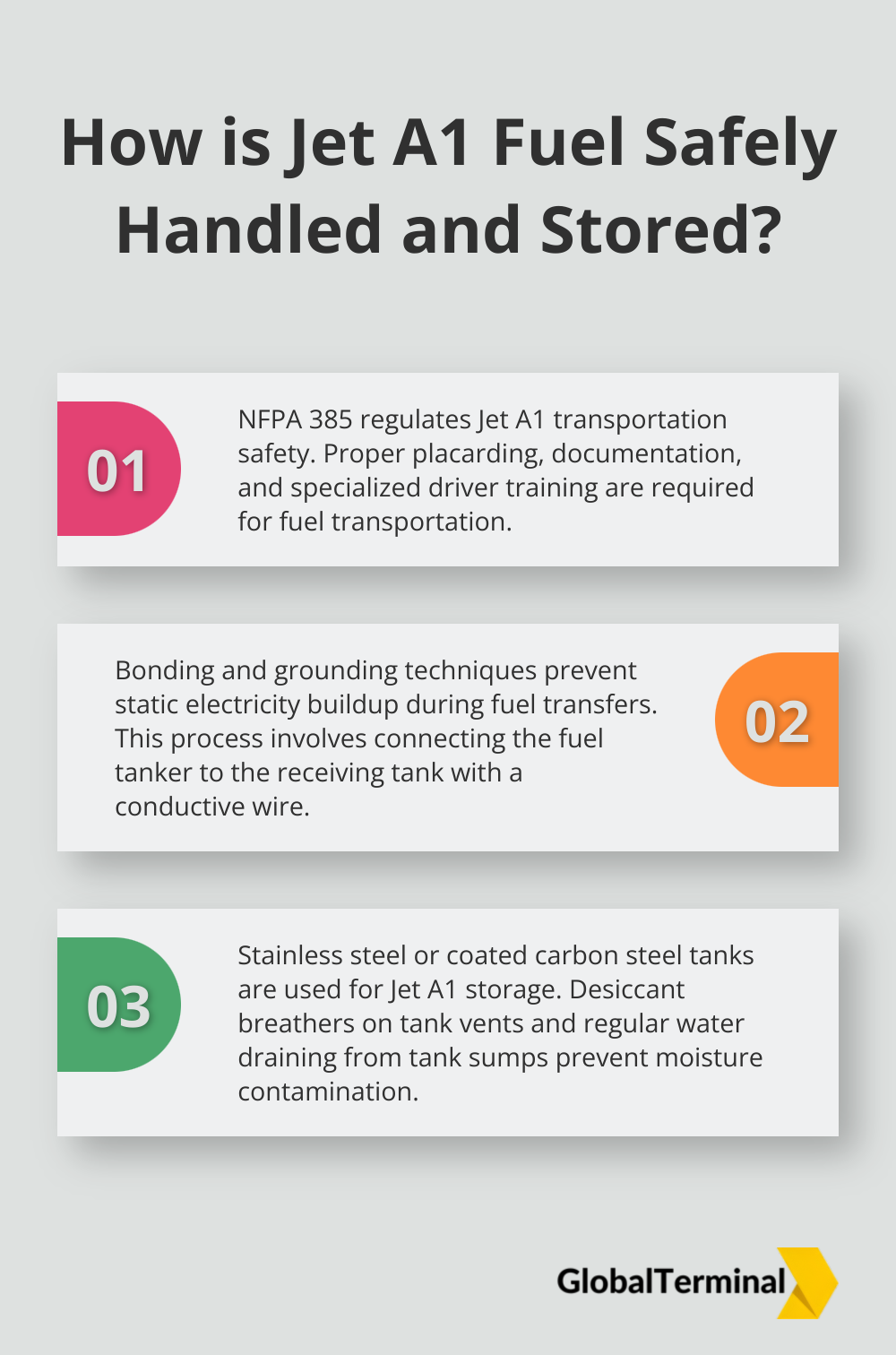
To prevent static electricity buildup, which can cause sparks and potential ignition, fuel handlers use bonding and grounding techniques during fuel transfers. This process involves connecting the fuel tanker to the receiving tank with a conductive wire, which equalizes electrical potential and minimizes risk.
Optimal Storage Conditions
Jet A1 fuel requires meticulous handling to ensure safety, efficiency, and environmental protection. Proper storage starts with the right containers. Tanks should consist of materials resistant to fuel corrosion, typically stainless steel or specially coated carbon steel.
Moisture control is paramount in Jet A1 storage. Facilities employ desiccant breathers on tank vents to prevent water ingress. Regular water draining from tank sumps is essential, as water contamination can lead to microbial growth and fuel degradation.
Quality Control and Testing
Rigorous quality control measures ensure that stored Jet A1 meets all specifications before delivery to aircraft. Regular testing for density, flash point, and freezing point uses methods outlined in ASTM D1655.
Microbial contamination poses a significant threat to fuel quality. Facilities use adenosine triphosphate (ATP) testing to detect microbial presence quickly. If contamination occurs, biocide treatments follow strict dosage guidelines to eliminate growth without affecting fuel properties.
Particle contamination monitoring uses automatic particle counters, ensuring fuel cleanliness meets the stringent requirements of modern jet engines.
These handling and storage practices maintain the integrity of Jet A1 fuel from receipt to delivery. A commitment to safety and quality ensures that every liter of fuel meets the exacting standards of the aviation industry.
Final Thoughts
Jet A1 fuel powers modern aviation with its unique blend of performance and safety features. The precise Jet A1 specs we explored highlight its critical role in efficient and reliable air travel. Every aspect of Jet A1 is engineered to meet the demanding requirements of commercial and military aviation.
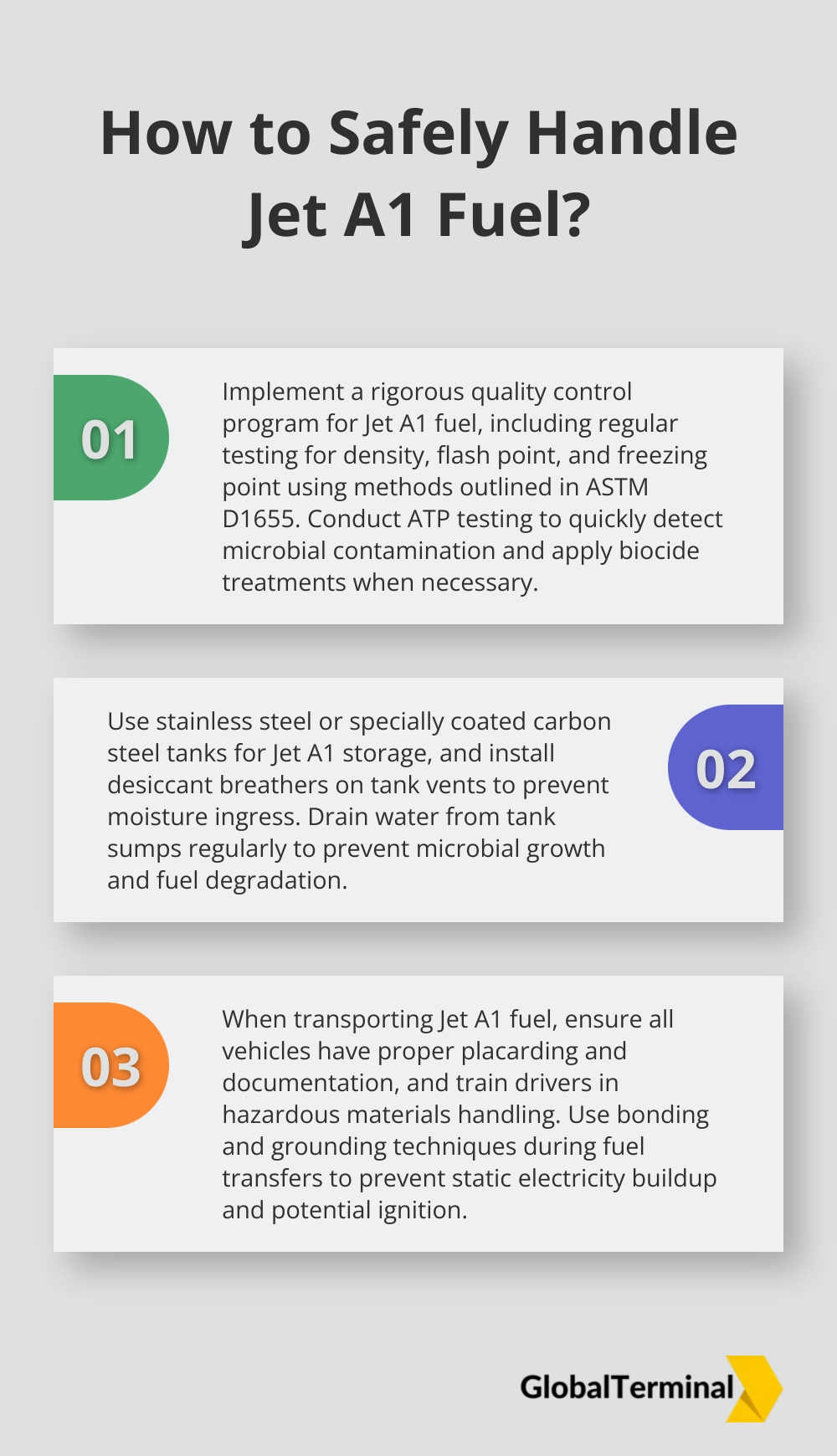
The aviation industry faces new challenges and opportunities as it looks to the future. Research and development focus on creating sustainable alternatives that maintain high performance standards while reducing environmental impact. These advancements may lead to modifications in Jet A1 specifications to accommodate blended fuels or new formulations.
At GLOBAL TERMINAL NETHERLANDS B.V, we recognize the importance of maintaining the highest standards in Jet A1 fuel storage and handling. Our facilities in key global ports ensure that every liter of fuel we manage meets or exceeds the rigorous Jet A1 specs required by the aviation industry. We strive to provide our clients with fuel that meets current standards and prepares for the evolving needs of tomorrow’s aircraft.

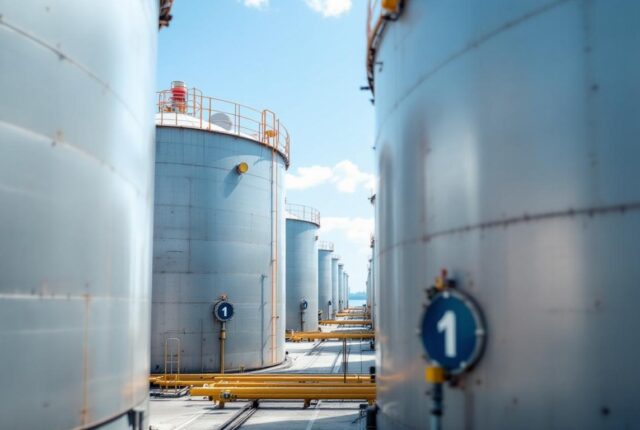
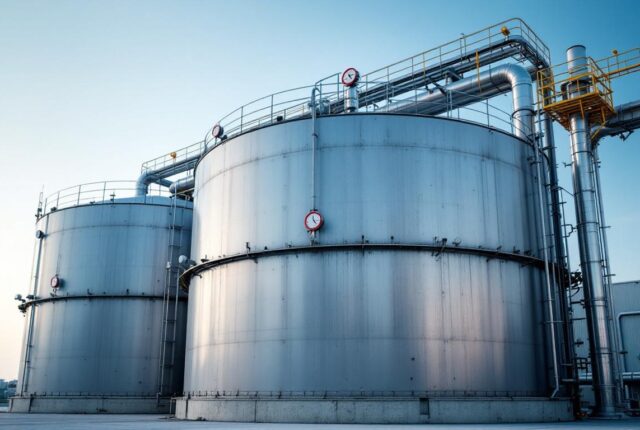
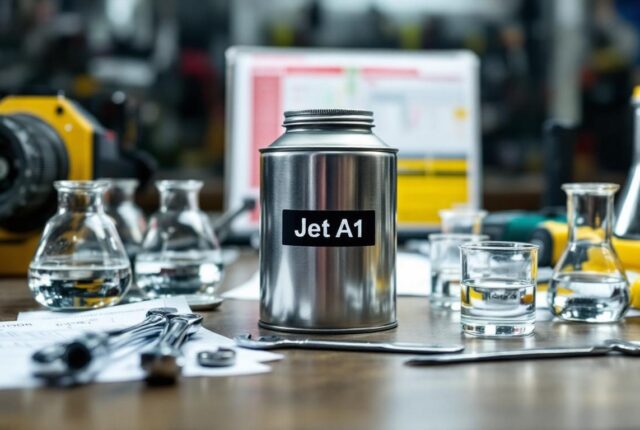

Leave a Reply